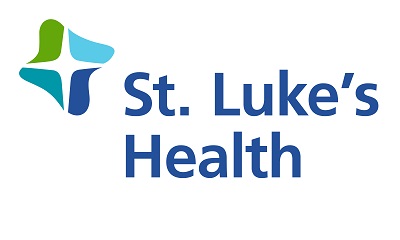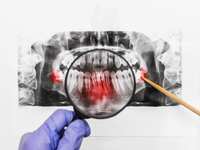The Case for Annual Cancer Screenings

One of the most important things you can do for your health is to stay up to date on cancer screenings. By the time cancer symptoms typically appear, the disease may have spread to other parts of the body and be harder to treat. Routine cancer screenings help you avoid that problem. Early diagnosis leads to earlier treatment and, in many cases, a higher chance of survival.
Unfortunately, the coronavirus pandemic led to a significant decrease in cancer screenings. According to the National Cancer Institute, about 9.4 million cancer screenings that normally would have taken place in 2020 didn’t happen. Facility closures, staff shortages, and fear of contracting COVID-19 during office visits all played a role.
However, COVID-19 didn’t eliminate the need for cancer screenings. In fact, the consequences of skipping routine screenings have turned out to be significant. More than 65% of radiation oncologists who answered a survey by the American Society for Radiation Oncology said they detected more advanced cancers among new patients compared with pre-pandemic years. These patients may have had their cancers detected and treated sooner if they were screened earlier. Again, early detection and early treatment are key to survival. Even a one-month delay in getting cancer treatment can increase mortality.
Please don’t put off routine cancer screenings. In the months and years since the pandemic began, we have implemented comprehensive safety measures in our screening facilities, so everyone can and should feel safe getting the screenings they need. Under the Affordable Care Act (ACA), most common cancer screenings must be covered by insurance, and programs are available if you need help paying for them.
If you’re not sure whether you need to be screened, here are the most common cancer screenings and their guidelines.
Breast Cancer Screenings
When breast cancer is detected early and hasn’t spread, the five-year relative survival rate is 99%, but that number drops significantly if it spreads outside the breast to distant areas of the body. Fortunately, breast cancer deaths have decreased in recent years because more women are getting screened regularly.
Screening mammograms use low-dose X-rays to capture images of each breast. A 3D mammogram takes several images as it moves in an arc around the breast to give your doctor a clear picture of the inside of the breast. 3D mammograms are highly recommended for women with dense breasts.
We recommend following these screening guidelines from the American Cancer Society (ACS):
-
Women ages 40 to 44 should have the option to start annual mammogram screenings.
-
Women ages 45 to 54 should have an annual mammogram.
-
Women age 55 and older can have a mammogram every two years but also have the option for an annual mammogram if necessary. The ACS also recommends continuing screenings as long as you are in good health.
Most insurance providers cover 100% of mammograms for women every two years, starting at age 40, or sooner with primary care physician recommendation.
Cervical Cancer Screening
When cervical cancer is detected and treated early, the five-year relative survival rate is 92%. Routine screenings find precancerous cells before they turn into cancer, making it much easier to treat.
Cervical cancer screenings include a human papillomavirus (HPV) test, a Pap test, or an HPV/Pap co-test. ACS recommends the following cervical cancer screening guidelines:
-
Women should begin screening at age 25 and repeat every five years.
-
Women ages 25 to 65 should have an HPV or HPV/Pap co-test every five years or a Pap test every three years.
-
Women older than 65 may not need cervical cancer screening if they have received normal results over the years.
Most insurance providers are required by law to cover cervical cancer screenings.
Colorectal Cancer Screening
Colorectal cancer isn’t an older person’s disease anymore. An increasing number of younger adults are being diagnosed, and the U.S. Preventive Services Task Force now recommends people at average risk for colorectal cancer begin screening at age 45 and continue every 10 years through age 75.
Colonoscopies are considered the gold standard for colorectal cancer screenings because doctors can use them to not only find but also remove precancerous polyps in the colon.
People at high risk for colorectal cancer may need earlier or more frequent screening. Risk factors include having a family history of colorectal cancer or a personal history of:
-
Colorectal cancer or certain polyps
-
Hereditary syndromes, such as familial adenomatous polyposis or Lynch syndrome, linked to colorectal cancer
-
History of radiation therapy to the pelvis or abdomen to treat previous cancer
-
Inflammatory bowel diseases (Crohn’s disease and ulcerative colitis)
There are several options for colorectal cancer screenings besides a colonoscopy, although colonoscopy is considered the most sensitive test. Generally, if other screenings have concerning results, your doctor will recommend a colonoscopy to confirm any findings.
Most insurance providers cover colorectal cancer screenings.
Lung Cancer Screening
Lung cancer, the second most common type of cancer in the U.S., is also the deadliest. However, we now have advanced technology that can detect lung cancer earlier than ever before. A low-dose CT scan takes detailed images of the lungs to reveal suspicious areas that regular chest X-rays of the past couldn’t.
If you are at high risk of developing lung cancer, schedule a low-dose CT scan. You qualify for this screening if you:
-
Are between the ages of 50 and 80
-
Currently smoke or have quit within the past 15 years
-
Have a 20 pack-year or more smoking history
Most insurance providers cover annual lung cancer screenings for people who meet these criteria.
A pack-year smoking history is an average of one pack of cigarettes per day for one year. For example, a 20 pack-year history means you smoked a pack a day for 20 years. A 10 pack-year history means you smoked two packs a day for 10 years.
If you aren’t sure if you qualify, talk to your doctor. Doctors will not judge you for smoking—they want to help you avoid a potentially fatal disease and are ready help you get the tests you need.
Prostate Cancer Screening
Maybe you know about the Movember movement, where people across the globe unite to raise funds and awareness of men’s health concerns—including prostate cancer—during the month of November.
About 1 in 8 men will receive a prostate cancer diagnosis, the most common cancer among men after skin cancer. Prostate cancer is second only to lung cancer as the leading cause of cancer-related death in men. Prostate cancer is highly treatable when detected early, which underscores the importance of screenings. Men diagnosed with prostate cancer that hasn’t spread outside the prostate have a greater than 99% five-year relative survival rate. Even when prostate cancer is diagnosed in the regional stage, when it has spread to nearby areas and lymph nodes, the five-year relative survival rate remains above 99%. But once it spreads further, the survival rate drops significantly.
Although the ACS suggests routine prostate screening can detect cancer early, when it’s more treatable, certain prostate cancer screenings can produce false-positive and false-negative results or lead to unnecessary treatments that can have side effects. If cancer is detected, some men do better with an active surveillance or watchful waiting approach instead of aggressive treatment because tumors are often very slow-growing and don’t cause any serious issues. Other men may choose to begin treatment and accept the potential side effects that come with it.
The important message here is to talk with your doctor about when and how often you should be screened for prostate cancer. Don’t put screenings off. Schedule the screenings you need today.
Routine cancer screenings could save your life. Schedule an appointment with your primary care physician to discuss which cancer screenings you need.
Micro-content Summary 1: Cancer screenings save lives. By the time symptoms for some of the most common cancers arise, it’s more likely that the cancer has spread far beyond where it started. Routine cancer screenings can detect cancer before symptoms start. Having an earlier diagnosis means treatment can start sooner, significantly increasing survival.
During the pandemic, many adults skipped cancer screenings, in some cases, for reasons beyond their control. However, the result has been an increase in cancers that could have been prevented.
Most common cancer screenings—breast, prostate, cervical, colorectal, and lung—are covered by insurance as an annual benefit. We encourage anyone who has fallen behind on cancer screenings to get back on track with their mammograms, Pap tests, colonoscopies and low-dose CT lung cancer screenings.
By Doug Lawson, PhD, CEO of St. Luke’s Health
















